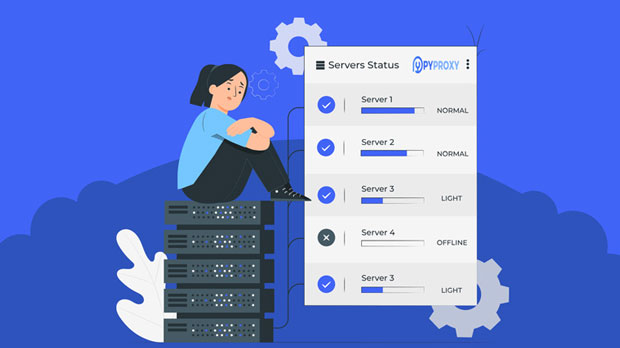The SOCKS5 protocol is a highly regarded feature among various web proxies, offering greater flexibility, improved performance, and enhanced security compared to older protocols. As businesses and individuals strive for online anonymity and secure data transfer, the demand for proxies supporting SOCKS5 has risen. This protocol allows users to route their internet traffic through a proxy server, masking their real IP address while also supporting additional protocols, such as UDP. The following sections will explore various types of web proxies supporting SOCKS5, their benefits, use cases, and factors to consider when choosing one. Understanding the SOCKS5 ProtocolThe SOCKS5 protocol, a variant of the SOCKS (Socket Secure) protocol, operates as an intermediary between the user and the internet. Unlike HTTP proxies, which only work with HTTP traffic, SOCKS5 supports a wide range of internet traffic protocols, including TCP, UDP, and even ICMP. It is known for its ability to handle data transmission with minimal lag, making it a preferred option for many businesses and individuals looking to bypass geo-restrictions, protect sensitive data, or access content anonymously. sock s5 proxies provide a versatile solution for high-traffic applications, offering the ability to connect to any type of internet service without being limited by specific protocol requirements. Additionally, SOCKS5 enhances security with its ability to support authentication, ensuring that only authorized users can access the proxy.Web Proxy Types That Support SOCKS5Several types of web proxies support the SOCKS5 protocol, each with specific features catering to different user needs. Understanding these options can help users choose the right type of proxy for their requirements. Here are the most common proxy types that support SOCKS5:1. residential proxiesResidential proxies are the most common type of proxy that supports the SOCKS5 protocol. These proxies are assigned from real residential addresses, making them virtually indistinguishable from regular user traffic. This type of proxy is preferred for web scraping, accessing geo-restricted content, and enhancing online anonymity.Residential proxies offer high anonymity because they originate from real-world IP addresses. As a result, websites are less likely to block residential IP addresses. The primary drawback of residential proxies is their higher cost compared to datacenter proxies, making them more suitable for high-priority, high-security tasks.2. Datacenter ProxiesDatacenter proxies are another common option that supports SOCKS5. These proxies are not linked to physical residential locations but instead operate from data centers. While they may not offer the same level of anonymity as residential proxies, they can still provide high-speed access to the internet at a lower cost. Datacenter proxies are particularly effective for users who prioritize performance over absolute anonymity.Since datacenter proxies originate from centralized servers, they can handle a large volume of traffic without causing significant delays. They are often used for tasks that require quick access to websites or services, such as market research, testing, or content scraping. However, websites are more likely to detect and block datacenter proxies, especially if they use the same IP pool excessively.3. Mobile ProxiesMobile proxies, which operate through mobile networks, also support the SOCKS5 protocol. These proxies use IP addresses provided by mobile carriers, ensuring a high level of anonymity and reducing the risk of being detected by websites. Mobile proxies are ideal for users looking to access websites that restrict or block non-mobile traffic.The main advantage of mobile proxies is their ability to simulate mobile device traffic, making them an excellent choice for tasks such as testing mobile applications or accessing content specific to mobile devices. However, mobile proxies can be more expensive than datacenter or residential proxies due to the increased complexity and cost of operating within mobile networks.Benefits of Using SOCKS5 Web ProxiesThere are several compelling reasons why users should consider using SOCKS5-enabled web proxies. The following section outlines the primary benefits of SOCKS5 proxies.1. Enhanced Security and PrivacyOne of the most significant advantages of SOCKS5 proxies is their enhanced security and privacy. By routing internet traffic through a proxy server, SOCKS5 helps to mask the user's real IP address, preventing websites from tracking their location or identity. Additionally, SOCKS5 supports advanced authentication methods, ensuring that only authorized users can access the proxy.This feature is particularly valuable for individuals who want to remain anonymous while browsing the web or accessing sensitive information. SOCKS5 proxies are often used by businesses and individuals concerned with online privacy, such as journalists, whistleblowers, or political activists.2. Improved PerformanceSOCKS5 proxies are known for their low latency and high performance. Unlike other proxies, which may cause delays or reduce browsing speeds, SOCKS5 proxies maintain fast and reliable connections, making them ideal for high-traffic applications. The protocol’s ability to handle multiple types of internet traffic, including UDP, also contributes to its superior performance.This makes SOCKS5 a popular choice for users engaged in bandwidth-intensive activities, such as video streaming, gaming, or large-scale data scraping.3. Access to Geo-Restricted ContentWeb proxies supporting SOCKS5 can help users bypass geo-restrictions and access content that is otherwise unavailable in their region. This is particularly useful for users who want to access streaming platforms, websites, or services restricted by geographical location.Since SOCKS5 proxies can disguise the user’s real IP address, they can simulate browsing from a different location, enabling access to restricted content. This feature is commonly used by international businesses, content creators, and individuals who want to unlock global content libraries.Choosing the Right socks5 proxyWhen selecting a web proxy that supports SOCKS5, several factors must be considered to ensure optimal performance and security. Here are some key considerations:1. Speed and ReliabilityThe speed and reliability of the proxy server are crucial, especially for activities that require high-speed internet access, such as video streaming or online gaming. Choose a proxy provider that offers fast connections and minimal downtime to ensure a smooth user experience.2. Security FeaturesSecurity should be a top priority when selecting a SOCKS5 proxy. Look for providers that offer encryption, authentication, and other security measures to protect your data and online identity. A reliable SOCKS5 proxy should offer a secure connection that minimizes the risk of data breaches or cyberattacks.3. Pricing and SupportWhile SOCKS5 proxies can be more expensive than other types of proxies, the added benefits of security, privacy, and performance may justify the cost. Consider your budget and the level of support provided by the proxy service to ensure that you receive value for money. Opt for providers that offer customer support in case of any issues.ConclusionIn conclusion, the SOCKS5 protocol offers numerous advantages for users looking to enhance their online security, privacy, and performance. Web proxies supporting SOCKS5 are widely available in various types, including residential, datacenter, and mobile proxies. Each type comes with its unique set of benefits, making it essential for users to choose the right proxy based on their specific needs. By considering factors such as speed, security, and support, users can select a SOCKS5 proxy that best suits their requirements, ensuring a seamless and secure internet browsing experience.
Aug 12, 2025



































































